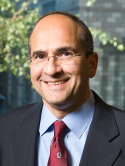The impact of postmastectomy radiotherapy on two-stage implant breast reconstruction: An analysis of long-term surgical outcomes, aesthetic results, and satisfaction over 13 years Journal Article
| Authors: | Cordeiro, P. G.; Albornoz, C. R.; McCormick, B.; Hu, Q.; Van Zee, K. |
| Article Title: | The impact of postmastectomy radiotherapy on two-stage implant breast reconstruction: An analysis of long-term surgical outcomes, aesthetic results, and satisfaction over 13 years |
| Abstract: | BACKGROUND: Postmastectomy radiation therapy is increasingly indicated in patients with node-positive breast cancer. The authors prospectively evaluated long-term outcomes in patients with two-stage implant-based reconstruction and postmastectomy radiation therapy to the permanent implant. METHODS: A cohort of 1415 patients operated on by a single surgeon from 1998 to 2010 was evaluated annually. Outcomes were recorded prospectively. Complication rates were compared between irradiated and nonirradiated implants, including reconstructive failure (implant loss), complications (e.g., capsular contracture), aesthetic results, and satisfaction. Predicted implant loss and replacement rates were examined by irradiation status with Kaplan-Meier analysis and the log-rank test. RESULTS: A total of 2133 breast implant reconstructions with a mean follow-up of 56.8 months (range, 12 to 164 months) were included. Three hundred nineteen implants received radiation. Implant loss occurred in 9.1 percent of irradiated implants and 0.5 percent of nonirradiated implants (p < 0.01). Capsular contracture grade IV was present in 6.9 percent of irradiated and 0.5 percent of nonirradiated implants (p < 0.01). There was no difference between groups regarding implant replacement. Ninety-two percent of irradiated patients had good to excellent aesthetic result, and 94.2 percent would choose implants again. Predicted implant loss rates were 17.5 percent and 2.0 percent for irradiated and nonirradiated implants, respectively, at 12 years (p < 0.01), and predicted implant replacement rates were 12.7 percent and 8.8 percent, respectively, at 8 years (p = not significant). CONCLUSIONS: This is the largest prospective long-term outcomes evaluation in women with immediate tissue expander/implant reconstruction and postmastectomy radiation therapy. Most patients had a good to excellent aesthetic result and preserve their reconstruction at 12 years. CLINICAL QUESTION/LEVEL OF EVIDENCE: Therapeutic, III. |
| Keywords: | treatment outcome; middle aged; patient satisfaction; postoperative care; prospective study; prospective studies; mastectomy; breast neoplasms; tissue expansion devices; time; time factors; esthetics; breast implants; breast augmentation; tissue expander; breast implantation; procedures; breast implant; humans; human; female |
| Journal Title: | Plastic and Reconstructive Surgery |
| Volume: | 134 |
| Issue: | 4 |
| ISSN: | 0032-1052 |
| Publisher: | Lippincott Williams & Wilkins |
| Date Published: | 2014-10-01 |
| Start Page: | 588 |
| End Page: | 595 |
| Language: | English |
| DOI: | 10.1097/prs.0000000000000523 |
| PUBMED: | 25357021 |
| PROVIDER: | scopus |
| DOI/URL: | |
| Notes: | Export Date: 2 March 2015 -- Source: Scopus |
Altmetric
Citation Impact
BMJ Impact Analytics
MSK Authors
Related MSK Work






